Click on images to enlarge
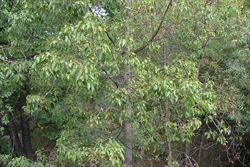
infestation (Photo: Sheldon Navie)

habit of mature tree (Photo: Sheldon Navie)
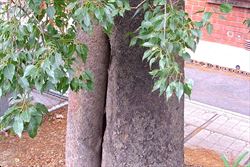
slightly swollen trunk of large tree (Photo: Sheldon Navie)
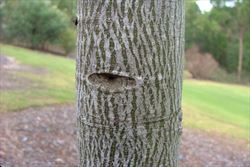
close-up of bark on sapling (Photo: Sheldon Navie)
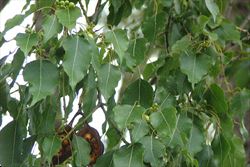
leaves and flower buds (Photo: Sheldon Navie)
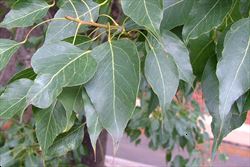
leaves (Photo: Sheldon Navie)
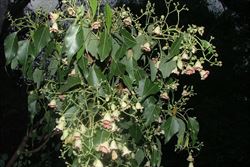
flower clusters (Photo: Sheldon Navie)
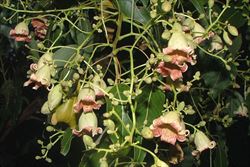
bell-shaped flowers (Photo: Sheldon Navie)
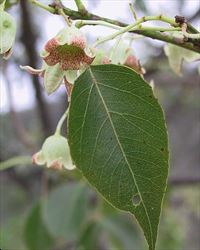
close-up of leaf and flowers (Photo: Jackie Miles and Max Campbell)
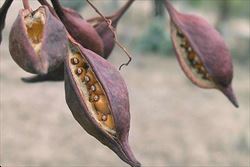
mature fruit with seeds (Photo: Jackie Miles)
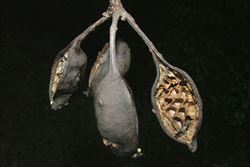
old fruit (Photo: Sheldon Navie)
Scientific Name
Brachychiton populneus (Schott & Endl.) R. Br. subsp. populneus
Family
Sterculiaceae
Common Names
black kurrajong, bottletree, kurrajong, kurrajong bottle tree
Origin
Native to large parts of eastern Australia (i.e. eastern and central Queensland, eastern New South Wales, the ACT and north-eastern Victoria). It is mainly found in sub-coastal and inland districts within these regions.
Naturalised Distribution
Naturalised in the coastal districts of south-western and western Western Australia (i.e. near Perth and Geraldton) and in the south-eastern and eastern parts of South Australia. Also thought to have become naturalised beyond its native range in Victoria.
Notes
Kurrajong (Brachychiton populneus subsp. populneus) is regarded as an environmental weed in Western Australia and some parts of Victoria (e.g. in the Goulburn Broken Catchment and the Wimmera region). It has been widely planted as an ornamental tree in south-western Western Australia and has occasionally escaped from cultivation to become a weed in bushland areas.
For example, in Kings Park in suburban Perth, kurrajong (Brachychiton populneus subsp. populneus) has spread from cultivation in the botanic gardens into the adjoining bushland reserve. Densities of up to 70 trees per hectare of this species have been recorded in the most disturbed areas of Kings Park reserve. It is also a minor or potential environmental weed in south-eastern South Australia.

